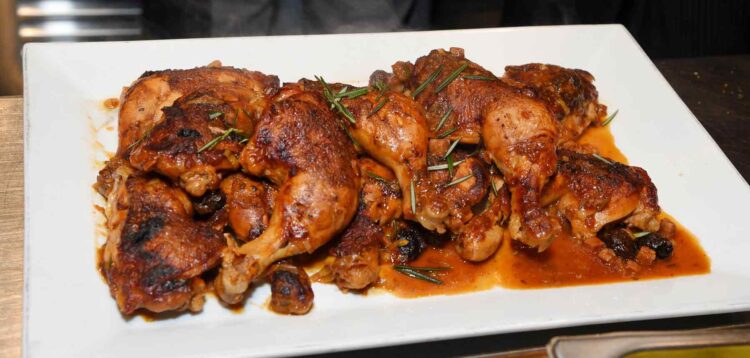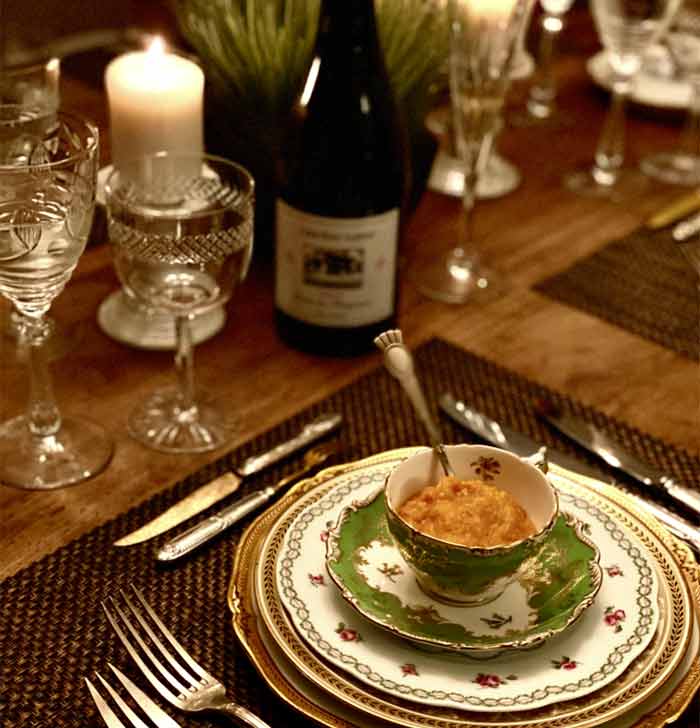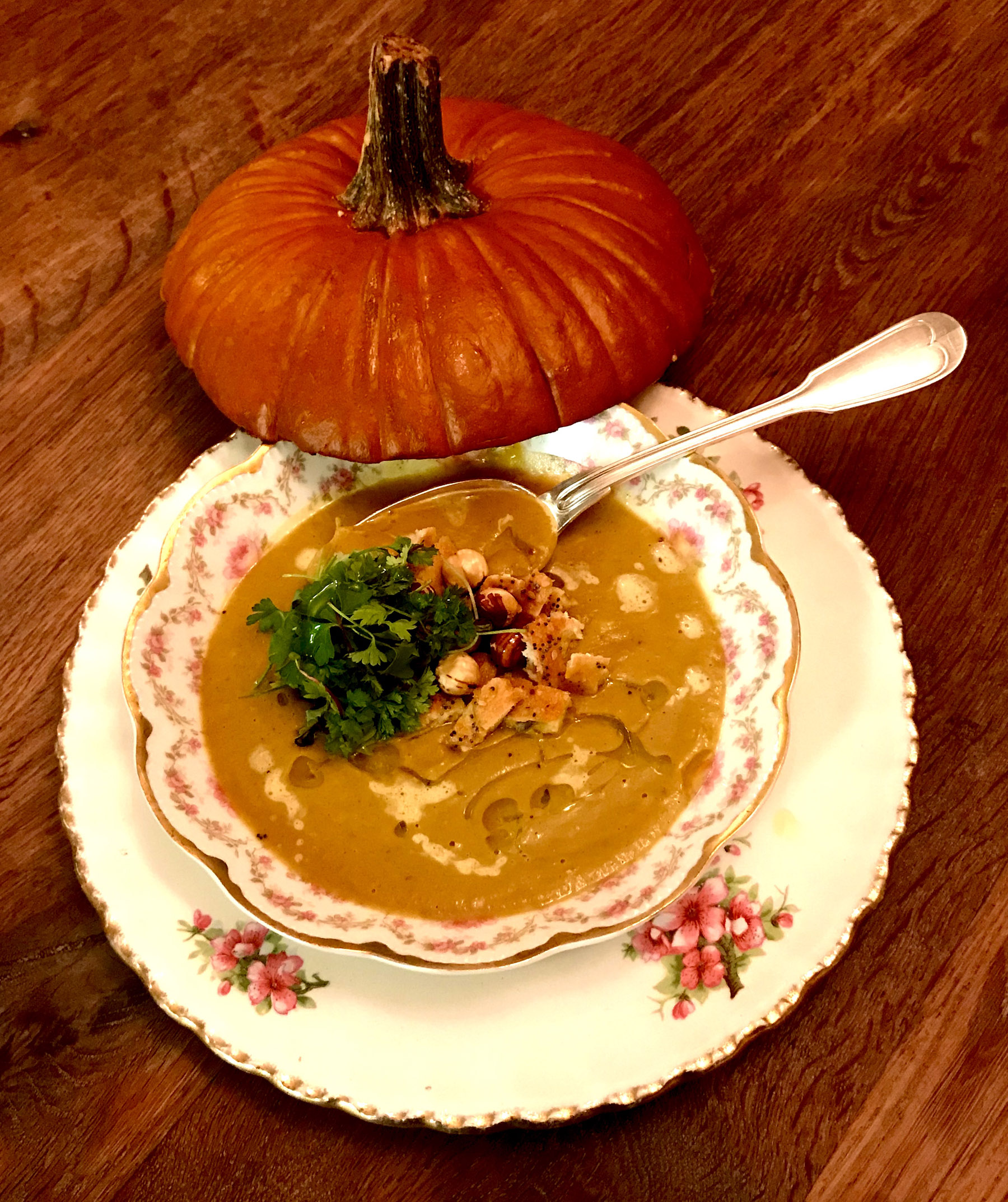Chicken Wine Pairing

Best Wines to Pair with Chicken
Chicken loves wine, and picking a good one is not one of life’s most difficult tasks. The great thing about chicken is that there are 1,001 ways to cook it — and undoubtedly a 1,001 wines to go with it. And it must be eaten with wine. So here’s some wine for thought with some of the more familiar variations of chicken you may find, at home or faraway.
What wine to serve with Coq-au-Vin
Red Wine
Chicken simmered in red wine, bacon, pearl onions, mushrooms and garlic cloves is wonderful with red Pinot Noir from France, California, Oregon, or any place you can find soft, silky examples of this naturally earthy-spicy red wine.
White Wine
But for coq au “vin blanc” (substituting white wine for red), can be a better match with a dry white wine with a modicum of stony earthiness, without the weighty fruitiness that is more typical of California’s popular Chardonnays, without the lemony sharp edge of typical Sauvignon (or Fumé) Blancs and without the perfumey fruitiness of Riesling or Moscato.
But not to worry; these kinds of whites are not rare, especially in France. The round, smoky nuanced whites of Burgundy’s Macon and Côte de Beaune regions, and the stony dry, smooth bottlings of Pinot Blanc and Pinot d’Alsace in Alsace — any of these will do.
In California, not all Chardonnays are distractingly fruity. In the cooler climates like Santa Barbara, there are some crisp styles with mineral qualities being produced, and you’ll find similar, moderately scaled Chardonnays in Oregon as well as in Washington.
But who says the world of coq au vin blanc turns around Chardonnay? The Pinot Blancs of California as well as Oregon fulfill the same culinary need when it calls for a white wine that’s not too heavy, not too light, not too tart, and not too soft or fruity. Just walk into a store (or restaurant) and say “Pinot Blanc.”
Pairing Chicken Cacciatore with Wine
The familial Italian chicken is cooked either with tomatoes, herbs and white wine, or braised with black olives and anchovy. Sometimes all of it. Tuscany’s Chianti Classico and Brunello di Montalcino, which are made from the red Sangiovese grape, have the natural acidity and cherry tomato-like fruitiness to strike the perfect balance with this style of chicken.
Other excellent and often cheaper Sangiovese-based red wines from Italy include Carmignano, Sangiovese di Romagna and Rosso di Montalcino. But from across the ocean, some of the California grown Sangioveses have more than enough zip and fruitiness to fit the bill.
Barring that, there are other red wine grapes — notably Barbera and Dolcetto — cultivated in both Italy and California (and bottled by the names of the grape in both places) that offer soft, zesty edged fruit qualities similar to Sangiovese, making as effortless a match with cacciatore chicken.
Best Wine to Serve with Chicken Paprikas
We recommend a soft, lushly fruited, California grown red wine made from the Merlot grape or one of California’s elegant yet dense, juicy “Bordeaux”-style blends of Merlot, Cabernet Sauvignon and Cabernet Franc.
Luscious Merlots = luscious chicken paprikas. The simplicity of this formula is matched only by the beauty of its predictability.
What Wine to Serve with Lemon or Ginger Chicken
The familiar Chinese-style dishes — in sweet and sour lemon sauces or steamed with ginger and garlic — call for more exotically perfumed white wines that combine both acidity and traces of residual sugar. But this does not mean that the best choice is Gewürztraminer, which is a lychee-scented white wine that has a tendency towards low acidity and slightly bitter qualities (as commonly found in the Gewürztraminers of France’s Alsace, and many of the dryer styles of California). Heavy, bitter styles of Gewürztraminer have a tendency to taste unbearably harsh with sweet and sour dishes and dishes that are sweeter and more sour than necessary.
The best white wine for strongly flavored Chinese styles of chicken is Riesling, which is lush enough to merge seamlessly with gingery spices and gently balanced enough to echo sweet and sour notes. The lightest yet most intensely scented and refined Rieslings in the world come from Germany, particularly the Kabinett quality styles from the Mosel-Saar-Ruwer, Rheingau and Pfalz regions. In Washington, Chateau Ste. Michelle has been turning out freshly balanced, lusciously fruited Rieslings since the 70s; in the Southern Hemisphere, the Rieslings by Leeuwin Estate in Western Australia and Villa Maria in New Zealand are both wonderful, tropical-scented wines with hints of sweetness and balanced by enough zesty acidity to harmonize with sweet/spicy/gingery Asian-style chickens.
SUGGESTED READING: Pairing Wine with Asian Food
Pairing Chicken Étouffée & Wine
In North America, the Cajun-Creole style of casserole chicken may very well reign supreme. Versions such as Paul Prudhomme’s — perfectly thickened by roux, the “holy trinity” of onions, bell peppers and celery, and a dozen or so other spices and seasonings — are both complex and mercilessly intense. For something so good, the only thing to drink with it is a great wine!
Étouffée likes wines equal to it in depth, strength and layers of spice. This would mean a good red wine, but not one with a dry, hard taste that would deaden the palate. The wine that best fits this description is Zinfandel.
Best Wine For…
Chicken Pot Pie
Any soft, lush, garden variety Chardonnay.
Barbecue Chicken
If in a sticky/spicy red marinade, a dry Rosé; if in an Asian style soy/ginger marinade, an off-dry German Riesling.
READ MORE: Sticky Honey Garlic Ginger Glazed Chicken Wings Recipe
Simple Grilled Chicken
Italian Pinot Grigio or Oregon Pinot Gris (especially if served with a salsa or simple squeeze of lemon).
READ MORE: Barbecue & Grilling Tips
Chicken Tandoori
Medium-sweet German Riesling (“Spätlese”) or Italian Moscato d’Asti
READ MORE: Indian Food & Cooking Terms & Glossary





